Introduction

I have already reviewed many of the super fast 50mm lenses from China, e.g. the TTArtisan 50mm 0.95, several 50mm 0.95 from Zhong Yi and just lately the SYoptic 50mm 1.1. What was missing so far was this 7Artisans 50mm 1.05 with its rather unorthodox maximum aperture of f/1.05. What also sets it apart from the others: it has actually been designed for the Sony E-mount cameras, not for M-mount cameras. So let us find out what this lens has in store for us.
Sample Images




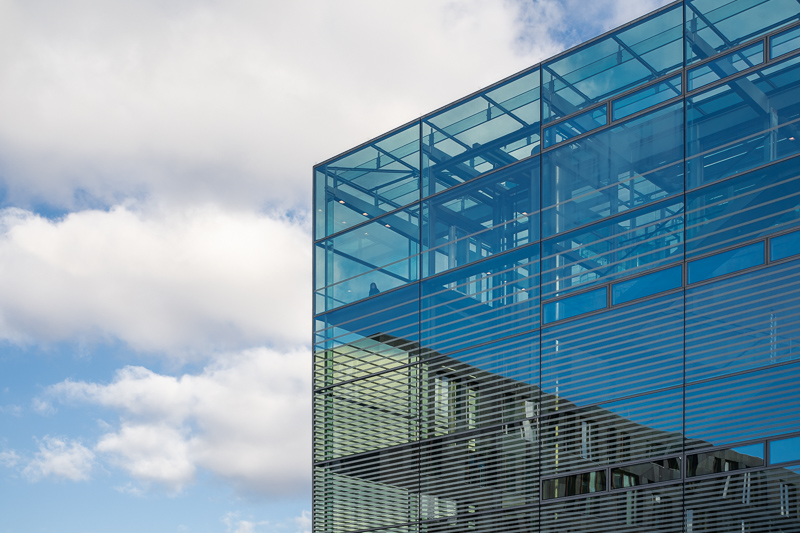
Most of the sample images in this review can be found in full resolution here.
Contents
Disclosure
The 7Artisans 50mm 1.05 E was kindly provided free of charge by 7Artisans via their German distributor B.I.G. Photo for reviewing purpose for a few weeks.
Specifications
The 7Artisans 50mm 1.05 is available for Sony E, Canon RF, Nikon Z and L-mount. I am reviewing the E-mount version here which has the following specifications:
-
- Diameter: 65 mm
- Field of view: 46° (diagonally)
- Length: 81 mm
- Weight: 590g
- Filter Diameter: 58 mm
- Number of Aperture Blades: 13 (rounded)
- Elements/Groups: 10/7

- Close Focusing Distance: 0.57 m
- Maximum Magnification: 1:8.0
- Mount: Sony E
You can buy this lens from B.I.G. Photo (DE) | amazon.com | amazon.de | ebay.com | ebay.de | B&H for about $399 (affiliate links)
Handling / Build Quality

The first 7Artisans lens I reviewed here, the 28mm 1.4 FE+ – and also the 75mm 1.25 – were manufactured by DJOptical, but it seems they are lately producing exclusively for TTArtisan.
The mechanical design of this 7Artisans 50mm 1.05 is quite a bit different compared to that we are used to from the DJOptical lenses, so let us have a closer look.
The mechanical quality generally feels good and all the markings are engraved and filled with paint, but there are a few things to point out: the aperture ring (90° rotation from f/1.05 to f/16) has a very interesting stepping, as the stops between f/1.4 and f/2.8 are pretty much equidistant and those between f/4.0 and f/16 are much narrower but also equidistant.
There are also no click stops and therefore it happend to me quite often that I changed the aperture setting accidentally.
The focus ring does offers a nice resistance and rotates ~110° from the minimum focus distance of 0.57 m to infinity. The issue I have with this focus ring is that it feels a little bit mushy and even has a small amount of slack when changing the focus direction.
This was less of an issue in the field and more noticeable when setting exact focus for taking the sharpness evaluation pictures.
There is no hood distributed with the lens and I am not sure there even is an official one available.

The black bayonet does look cool from the outside as it is made from some shiny (or polished) metal, but unfortunately it is also shiny on the inside.

The 7Artisans 50mm 1.05 has the same diameter as the Syoptic 50mm 1.1 E but is noticeably longer. The 7Artisans lens is also 50% (200g) heavier and the Syoptic 50mm 1.1 E also ships with an aluminium lens hood.
Vignetting
light falloff

| f/1.05 | 1.8 EV |
| f/1.4 | 1.3 EV |
| f/2.0 | 0.9 EV |
| f/2.8 - f/16 | 0.8 EV |
The vignetting figures are surprisingly good for a compact and fast 50mm lens. A light falloff of 1.8 EV at the maximum aperture is the lowest I have seen in all the fast 50mm lenses I have reviewed so far.
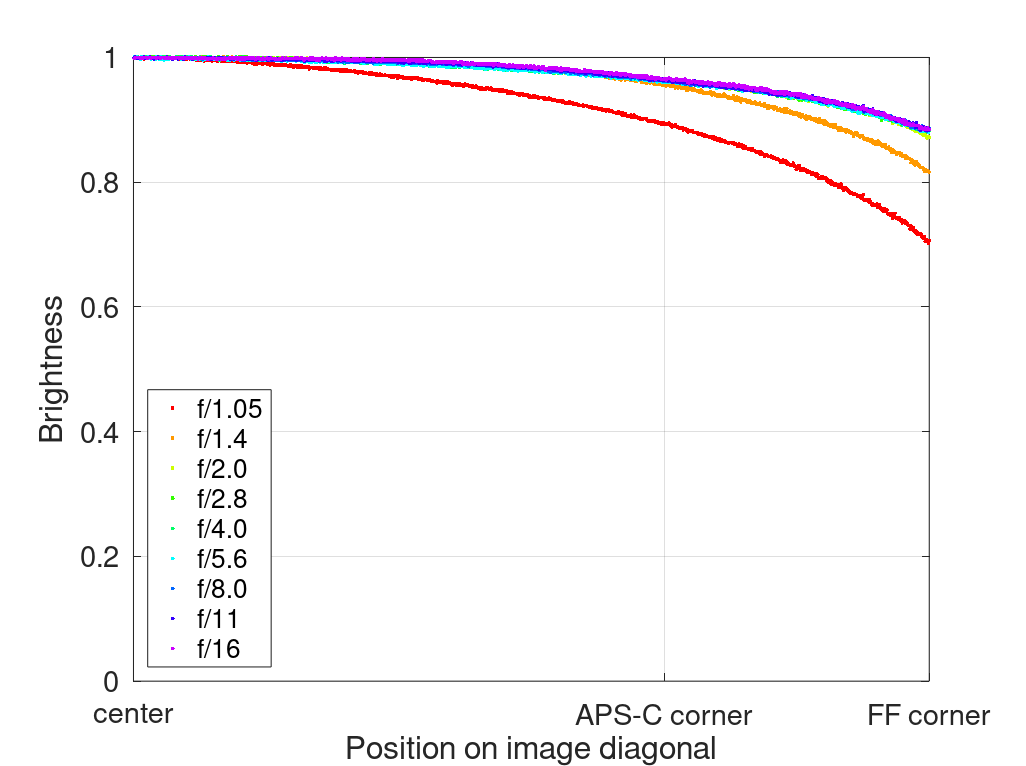
It is recommended to have a look at this article first to get an idea how this brightness graph works.
What is also surprising is the very low vignetting stopped down only a little. Already by f/2.0 it is hardly noticeable anymore amounting to less than 1 EV. The only other 50mm lenses I have used that show this little vignetting stopped down are the Samyang 50mm 1.2 XP and the Sigma 50mm 1.4 EX, but even here you have to stop down further to reach vignetting figures of less than 1 EV.
optical vignetting
Very fast yet compact lenses usually show a significant amount of optical vignetting. Without going too much into technical details optical vignetting leads to the truncation of light circles towards the borders of the frame.
In the center of the frame almost every lens will render a perfect circle, but only lenses with very low optical vignetting will keep this shape in the corners.
So in the following comparison we move from the center (left) to the extreme corner (right) and see how the shape of the light circle changes.
We see a few interesting things here: the light circles on the 7Artisans 50mm 1.05 are very clean and thanks to using no aspherical elements we don’t see any onion ring structures (which is also the case for the Syoptic 50mm 1.1).
We also see that the amount of optical vignetting is very low for a lens with these parameters, it might in fact be the lowest in a 50mm lens faster than f/1.4 I have seen so far and the shape also looks very natural to me.
I did shoot the lenses side by side, so they are directly comparable, we see the circle of the 7Artisans 50mm 1.05 @ f/1.05 is a tiny bit bigger than that of the Syoptic 50mm 1.1 @ f/1.1, which was to be expected. The lenses were set to 0.7 m focus distance, results may vary at other distances.
The lines running through the circles are due to the glass I used as a mirror to take these pictures and are not a feature of the lens.
The change in diameter between f/1.1 and f/1.4 on the Syoptic 50mm 1.1 is not as big as it should be and the change between f/1.4 and f/2.0 is bigger than it should be. In comparison to other lenses it looks to me like the f/1.4 click stop isn’t where it is supposed to be.
Sharpness
infinity (42mp Sony A7rII)

At wider apertures the performance is very similar to the Syoptic 50mm 1.1. This means the f/1.05 performance in the center is surprisingly good at infinity as there is only a little bit of softness due to spherical aberration visible.
There is also noticeable midzone dip at wider apertures present, as we are used from similar lenses like the Syoptic 50mm 1.1, Voigtländer VM 50mm 1.2 Nokton or the TTArtisan 50mm 0.95. It takes stopping down to f/4.0 for really good performance in the midframe area.
The performance in the corners reminds me a lot of the Syoptic 50mm 1.1 and the Voigtländer VM 40mm 1.2, which also show a noticeable drop in resolution close to the extreme cornes. This drop in sharpness is most obvious with the 7Artisans lens reviewed here though and even at f/11 the corners don’t look particularly good, which is also visible in the Coma section.
If you are looking for an “allround” lens that you can not only use for shallow depth of field photography but also for architecture/landscape photography demanding high across frame sharpness this lens will most likely not be the ideal choice for you.
portrait distance 1.4 m distance (24mp Sony A7III)
For portraiture it isn’t so important how flat the field is, it is more interesting to see what the sharpness is like when focused at different parts of the frame to take field curvature out of the equation.

We will be looking at 100% crops from the 24mp Sony A7III.
f/1.05 <—> f/1.4
Looking at these crops I have the feeling this lens has been optimized for portrait distances, as we are getting surprisingly contrasty pictures already at f/1.05.
The performance here is actually very close to slower lenses like the TTArtisan 50mm 1.4, Voigtländer VM 50mm 1.5 Nokton II or even the huge Samyang 50mm 1.2 XP.
In the field I also found this high contrast to make focusing a bit easier compared to lenses like the Syoptic 50mm 1.1, Zhong Yi 50mm 0.95 M or MS-Optics 50mm 1.1 Sonnetar.
close (0.57 m, 1:8.0, 42mp A7rII)
100% crops from center, A7rII, because of focus shift (see corresponding section) I refocused for every shot.
The 7Artisans 50mm 1.05 focuses down to 0.57m. This compares favorably to many of the fast M-mount 50mm lenses that hit the market lately, but doesn’t exactly allow for breathtaking close ups.
Compared to other fast lenses without a floating elements design the performance here is also above average, again similar to the TTArtisan 50mm 1.4 and about 2 stops better than the Syoptic 50mm 1.1 or the Voigtländer VM 50mm 1.2 Nokton.
Flare resistance

As always evaluating flare is a complex matter since you can get any lens to look bad if you push it hard enough and a slight change of scenario can affect results a lot.
Sun outside frame
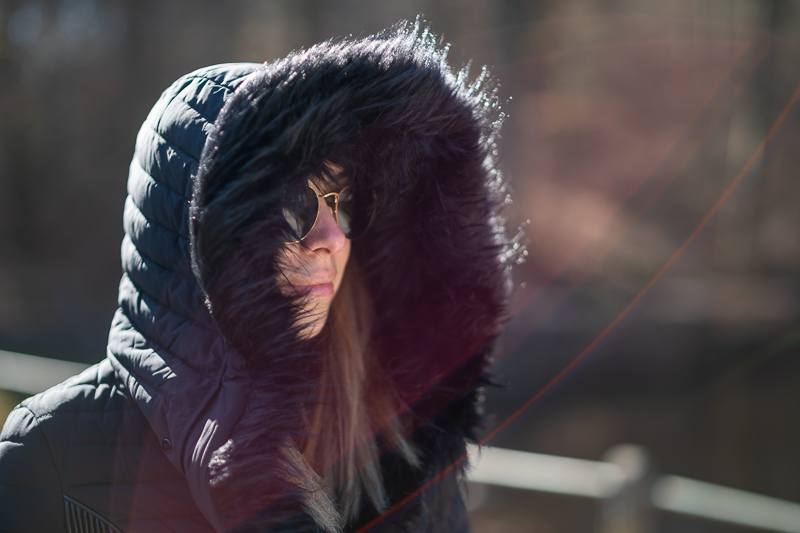
The 7Artisans 50mm 1.05 does not ship with a hood and I am not sure there even is an official hood available for this lens. It is definitely possible to catch big artefacts with the sun outside the frame. Sometimes it can help to shade the lens with your hand, in the example above I unfortunately didn’t see these artefacts in the viewfinder.
Street lamps at night can also lead to severe artefacts:

Sun inside frame
With the sun inside the frame (where a hood wouldn’t help anyway) the situation is not that rosy, it is very easy to catch frame filling artefacts, ghosts and encounter a noticeable loss of contrast.
Now at f/1.05 when there is a strong light source in the frame it is very easy to encounter very obvious ring flares. Stopping down just a little resolves this though.
Coma
Coma is strong from f/1.05 to f/1.4 and improves significantly on stopping down further. Other aberrations (mostly astigmatism) take over though, so as we have already seen in the sharpness section the corners never look particularly great.
100% crops from extreme corner, focused on center, Sony A7rII
Distortion
The 7Artisans 50mm 1.05 shows a noticeable but still low amount of barrel distortion. Dialing in +3 in Lightroom/Photoshop will correct this.
Bokeh

We already saw this lens shows low optical vignetting and this can be very good news for the general bokeh rendering. But then there is still field curvature which has the potential to ruin everything just before the finish line.
So, as usual we will check how the lens behaves at varying distances and with different backgrounds.
Close distance



At close distances there is a lot to like: bokeh is smooth and undistracting, thanks to low optical vignetting point light sources take on a natural shape even close to the corners of the frame and the comparatively high contrast at the maximum aperture adds to a nice sense of depth and subject separation.
Mid distance


There are similar pictures to the two above in my review of the Syoptic 50mm 1.1 and we can see some interesting differences here: first the 7Artisans shows less optical vignetting, so the shape of the out of focus point light sources is closer to that of a circle towards the corners.
But there is another significant difference: with the Syoptic 50mm 1.1 light circles which are overlapping turn into one big, smooth out of focus area, whereas we can often still see obvious edges of light circles with this 7Artisans 50mm 1.05.



With more complex, structured backgrounds we can see a slight tendency towards double edged structures. Most likely the spherical aberration is corrected to a higher degree in this 7Artisans lens.
Long distance



Also at longer focus distances light circles are rendered nicely and the contrast holds up very well, too. But there is something to be aware of at longer focus distance and that is field curvature.
If you look at the top right corner in the following pictures you can see that these parts are not nearly as much out of focus as other elements situated at this distance. There can be two causes for this: optical vignetting and field curvature.



We already know optical vignetting is low, so it might be worth looking at the shape of the field curvature, which I did here for roughly 2.0 m and 4.0 m:
We can see that the field is very flat at 2.0 m focus distance. If you look very closely you can see it is slightly “W” shaped, but not to a degree that it would really matter.
Now at 4.0 m on the other hand we see a very obvious “W” shape with the plane in focus bending to the back a lot towards the corners. At longer focus distances this can lead to the corners being less blurry than one might expect.
The 7Artisans is not alone here, just recently we saw such behaviour with the Laowa 45mm 0.95 and the Voigtlander VM 50mm 1.0 also seems to show this to a very high degree (still waiting for a review sample of that one).
Now we check how the 7Artisans 50mm 1.05 compares to the Syoptic 50mm 1.1 at these distances:
We saw the 7Artisans lens shows significantly less optical vignetting, so we would expect the corners to be more out of focus (blurrier). But as we can see in this comparison: this is not the case. The unfavourable shape of the 7Artisans’ field curvature nullifies the benefit of the better optical vignetting performance at these longer distances.
So where does all of that leave us? It depends on what you like and what you want.
If you like the high contrast at maximum aperture with a more structured bokeh you can find e.g. in the Leica Asph lenses or many of the fast Zeiss lenses you might be really happy with this 7Artisans 50mm 1.05.
If on the other hand you are looking for a more “gentle” or “vintage” rendering with subdued contrast and less corrected spherical aberration you may be better off with the Syoptic 50mm 1.1.
Sunstars

Due to incorporating an aperture diaphragm with 13 rounded aperture blades it is really hard to create sunstars with this lens. If you take a picture of a blue hour city scape you will see some small ones (see crops in Coma section) but if you have the actual sun in the frame it is very hard to create them, I tried.
If you want to know more about sunstar rendering of different lenses have a look at this article.
Chromatic aberration
lateral
100% crops from border, A7rII
Already in the midframe lateral CA start to become visible and increase towards the corners. They are still easily corrected in a raw developer like Lightroom by one click.
longitudinal

The good contrast at closer distances is a bit of a disadvantage here compared to lenses like the Syoptic 50mm 1.1, where the high amount of spherical aberration is doing a good job masking this.
We can clearly see magenta outlining in front of and green outlining behind the plane in focus. If you have a look at the focus shift section we also see it doesn’t clear up that fast as it is still easily visible at f/2.8.
At longer distances the outlining is also easy to find:
And purple fringing is on the strong side as well, still easily visible in low resolution pictures:
Sony A7III | 7Artisans 50mm 1.05 | f/1.05
So the performance here, it isn’t great. It is still better than e.g. that of the Zhong Yi 50mm 0.95 E III and hardly worse than that of the Sony FE 55mm 1.8 ZA or Sony FE 35mm 1.4 ZA, but the problem I have here is that there is an Apo badge on the box of this 7Artisans 50mm 1.05 and in my opinion it doesn’t deserve one.
Focus shift
50% crops, A7rII
With some lenses when stopping down the plane of optimal focus shifts to the back or the front. The 7Artisans 50mm 1.05 shows a small amount of focus shift which is especially noticeable when making the jump from f/2.0 to f/2.8.
As long as you stop down first and focus afterwards this will never be an issue.
Alternatives
I will only cover the really obvious alternatives in detail here, but if you ended up here by accident and you are looking for an AF lens may have a look at our Guide to 50mm lenses for Sony E-mount.
Syoptic 50mm 1.1:
The most obvious competitor. The Syoptic lens is your cheapest super fast 50mm option, especially the E-mount version. This review already contains many comparisons between the two.
The 7Artisans lens definitely offers higher contrast at maximum aperture and the vignetting is surprisingly low.
The Syoptic lens is smaller, cheaper, offers a bit better build quality and smoother bokeh in some scenarios.
buy from ebay.com for about $320 for the M-mount version and $200 for the other mounts (affiliate links)
7Artisans 50mm 1.1:
This is a very different lens. The difference is not that this one is f/1.1 instead of f/1.05, but everything else. The older f/1.1 version is not optimized to give smooth bokeh at maximum aperture but rather nervous bokeh with lots of field curvature. It also isn’t nearly as sharp, especially at wider apertures. Does not fit my taste, but maybe you like this kind of look it gives.
buy from amazon.com | amazon.de | B&H | ebay.com | ebay.de for $349 (affiliate links)
Voigtlander 50mm 1.2 Nokton E:
If you are not on a tight budget you gain electronic communications with your camera, better flare resistance and smoother bokeh here.
In terms of sharpness the 7Artisans has an edge at portrait distances but is worse at infinity stopped down, so the Voigtländer makes for a better allround lens.
buy from CameraQuest | B&H | Robert White | amazon.com | amazon.de | ebay.com | ebay.de for $999 (affiliate links)
TTArtisan 50mm 0.95 M:
Probably the currently most sold f/0.95 M-mount lens. Significantly bigger and heavier, 3 times at expensive.
Corners at infinity also never look great, more but to my eyes worse bokeh, similarly bad flare resistance.
buy from amazon.com/amazon.de, B&H or ebay.com/ebay.de for about $755/860€ (affiliate links)
Zhong Yi 50mm 0.95 M:
In terms of look of the pictures I prefer it over the aforementioned TTArtisan lens, but it also comes with quite a few compromieses, especially flare resistance and off center sharpness at wider apertures. It is also significantly bigger, heavier and 3 times as expensive and it shares the clickless aperture ring I am not a fan of. And the 1.0 m minimum focus distance is a real burden.
buy from amazon.com or B&H for $799 (affiliate links)
Voigtlander 50mm 2.0 APO-Lanthar:
If you are looking for the best possible correction of optical aberrations instead of lots of bokeh this is the lens you are looking for.
buy from CameraQuest | B&H | Robert White | amazon.com | amazon.de | ebay.com | ebay.de for $1049 (affiliate links)
Conclusion
good
|
average
|
not good
|
I have reviewed many of the fast and compact 50mm lenses but somehow overlooked this 7Artisans 50mm 1.05 – until now.
The biggest difference compared to most of the other super fast 50mm lenses I have reviewed lately is that this one has originally been designed for E-mount and not for M-mount. And when looking at the light falloff figures and the optical vignetting this definitely seems to have been a benefit.
A pleasant surprise is the high contrast already at f/1.05 and over most of the frame (at portrait distances), this also makes focusing a bit easier compared to some of the other super fast 50s.
The bokeh will appeal to those that like the high contrast look that we also know from the Leica Asph lenses and many of the fast modern Zeiss lenses. If you felt lenses like the Voigtländer 50mm 1.2 or Syoptic 50mm 1.1 were too soft for you this one might be what you are looking for.
Unfortunately there are also some things which are not that likable. The corners at infinity never look good, even stopped down to f/11. The flare resistance also leaves something to be desired, so if you were looking for an allround lens not only good for shallow depth of field photography but equally capable when taking stopped down landscape/architecture pictures this is probably not the ideal choice. And we are also not getting any electronic contacts for communication with the camera.
And then there are also a few more things I didn’t expect: on the box I could find an “Apo” tag, promising at least an above average correction of longitudinal CA, but this is not what I am seeing. The performance isn’t awful, but not nearly good enough to warrant an Apo tag.
The focus ring is also not the best I have ever seen as it feels a bit mushy and even has a tiny bit of slack when changing the direction of rotation, in the field this wasn’t a big deal though.
Personally I also prefer having an aperture ring with click stops in order not to accidentally change the aperture, but this is a personal preference.
If you are using one of the modern mirrorless cameras and you are looking for a very fast 50mm lens for portraiture/shallow depth of field photography the 7Artisans 50mm 1.05 is a very interesting option nonetheless, as the high contrast look coupled with generally likable bokeh and surprisingly low vignetting often made me overlook the (mostly minor) flaws in the field.
You can buy this lens from B.I.G. Photo (DE) | amazon.com | amazon.de | ebay.com | ebay.de | B&H for about $399 (affiliate links)
Sample Images










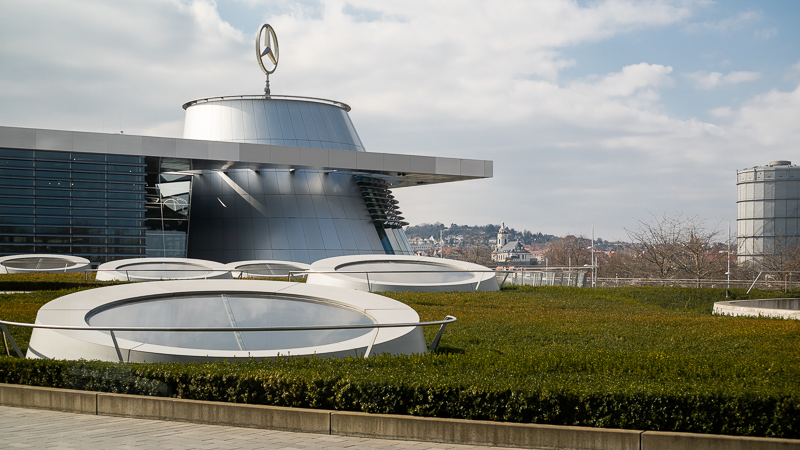

Most of the sample images in this review can be found in full resolution here.
Further Reading
- Sony FE lenses: Our comprehensive and independent guide
- Sony FE lenses: Our guide to portrait lenses from 85 to 135mm
- Finding photo opportunities near home
- Lens aberrations explained
Support Us
Did you find this article useful or just liked reading it? Treat us to a coffee!
![]()
![]()
![]() via Paypal
via Paypal
This site contains affiliate links. If you make a purchase using any of the links marked as affiliate links, I may receive a small commission at no additional cost to you. This helps support the creation of future content.
Latest posts by BastianK (see all)
- Analogue Adventures – Part 33: Harman Phoenix 200 - July 24, 2024
- Review: Nikon 200mm 2.0 IF-ED Ai – The first of its Kind - July 21, 2024
- Review: Voigtländer 50mm 1.1 Nokton – Better than its reputation? - July 17, 2024














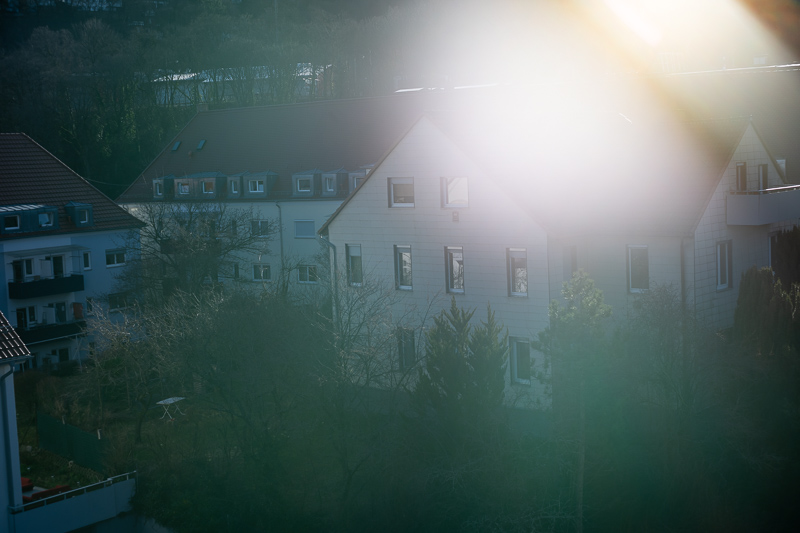
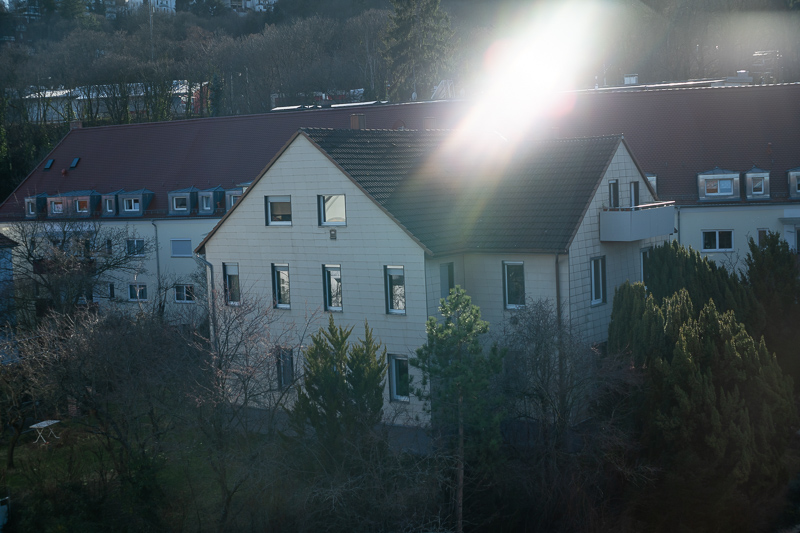















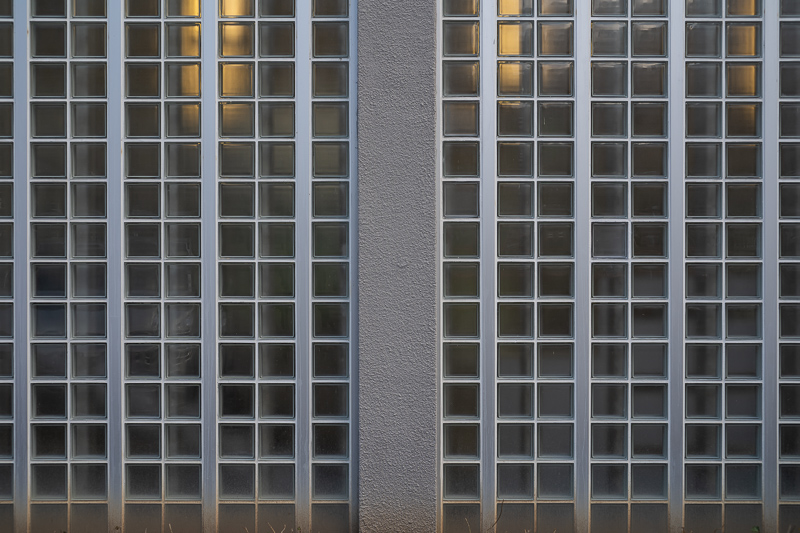





















A very interesting, detailed, fair and sensible review, as always. Thank you very much, Bastian!
Just a short question: you show two very informative illustrations of the field curvature at 2m and 4m. How did you create these photos? IMHO this is a great way to illustrate and stude the field curvature of a particular lens …
All the best, Roman
This is the “Find Edges” filter in Photoshop.
In the german version you can find it under “Filter” -> “Stilisierungsfilter” -> “Konturen finden”.
You need a very even yet structured surface you can take pictures of at an angle for best effect though.
A very even lawn with grass will work really well, but I don’t have that close by so I was using a building facade instead here.
I was also experimenting with asphalt concrete, but it didn’t work as well.
Ah, thank you very much! I have seen samples of this technique with grass before, but your example – the building facade – makes the result IMHO much clearer and also more impressive ;–). I will try if I can find a similar structure … Thank you again and all the best!
Optical quality aside, just considering the mechanics and operation, yet another example of the Chinese manufacturers (and Voigtlander) missing an opportunity to vastly improve the functionality of manual-focus lenses, at low cost.
What I’m thinking about is the traditional “pre-set” aperture mechanism. For those not old enough to have seen it, that was two aperture rings right next to each other, one click-stopped that served as the aperture limiter to which the lens would be “preset”, and the second a non-clicked, freely-turning ring that could move between max aperture and the limit “preset” on the first ring.
That allowed two beneficial types of operation:
1) you could focus wide open, then stop down to the “preset” aperture, quickly and without lowering the camera from your eye, and 2) for video, have non-clicked aperture operation.
Win-win.
I doubt the extra mechanism would add more than 10 dollars or euros to the cost (if even that), yet it would make manual-aperture lenses much more usable and useful.
I severly doubt many people would be interested in this feature, especially as full-stop click stops allow for the same thing as long as you are able to count to 5.
Nope, not “the same thing”, because (if you know what f-stop you want to use) stopping-down a preset lens is much faster — no need to count the clicks, just slam the secondary ring clockwise or counter-clockwise until it “automatically” stops at the aperture value that you’ve preset on the primary ring. (And yet because the secondary ring turns freely (no clicks) you still have “clickless” if you want that for video).
“Preset” manual aperture rings are vastly more convenient, and faster, than plain single-ring manual aperture systems. Try it, you might like it. Preset-aperture manual systems didn’t vanish because they were worse than single-ring ones, but simply because they got pushed aside by lensmakers going to fully-automatic aperture mechanisms. But now that manual-aperture lenses are again being made by a multitude of manufacturers, I think that at least some ought to consider a return to the preset mechanism.
IMO the preset ring is more useful with SLR viewfinder when stopped down aperture makes SLR viewfinder too dim to properly focus. With EVF on mirrorless cameras, I find focusing at the aperture to shoot works really well. EVF compensates the brightness in most situations, and focusing at the exact aperture gives exact DOF preview and avoid any focus shift issue.
A year ago I was choosing between these TTartisan50/1.4, in the end I took TTartisan as more versatile. By the way, there is no comparison of them here.
Hi Sergun, I am actually wondering about how those two compare. It would be great if you or anyone else can refer us to a comparison or share experiences with both, the 7artisans 50 1.05 and the TTartisan 50 1.4.
Thanks for yet another thorough lens review.
Did you check the real max aperture of the lens? If not, do you think the degree of blur in the center of the image suggests that the stated max aperture is correct?
I am asking, since Ken Rockwell measured the entrance pupil to be 41mm, which suggests a real max f-stop being f/1.22 given a 50mm focal length. Or is the real focal length closer to 43mm, which would fit with the official max aperture?
The front element is big enough for a 50mm f/1.05 lens, that is all one can check without fancy measuring equipment.
The only other lens I could compare it to was the Syoptic 50mm 1.1, the comparison is in the review and did not give me any reason to doubt the stated f-stop,
unless both lenses would be off to a very similar degree, which is of course possible but rather unlikely.
Thanks for your quick reply.